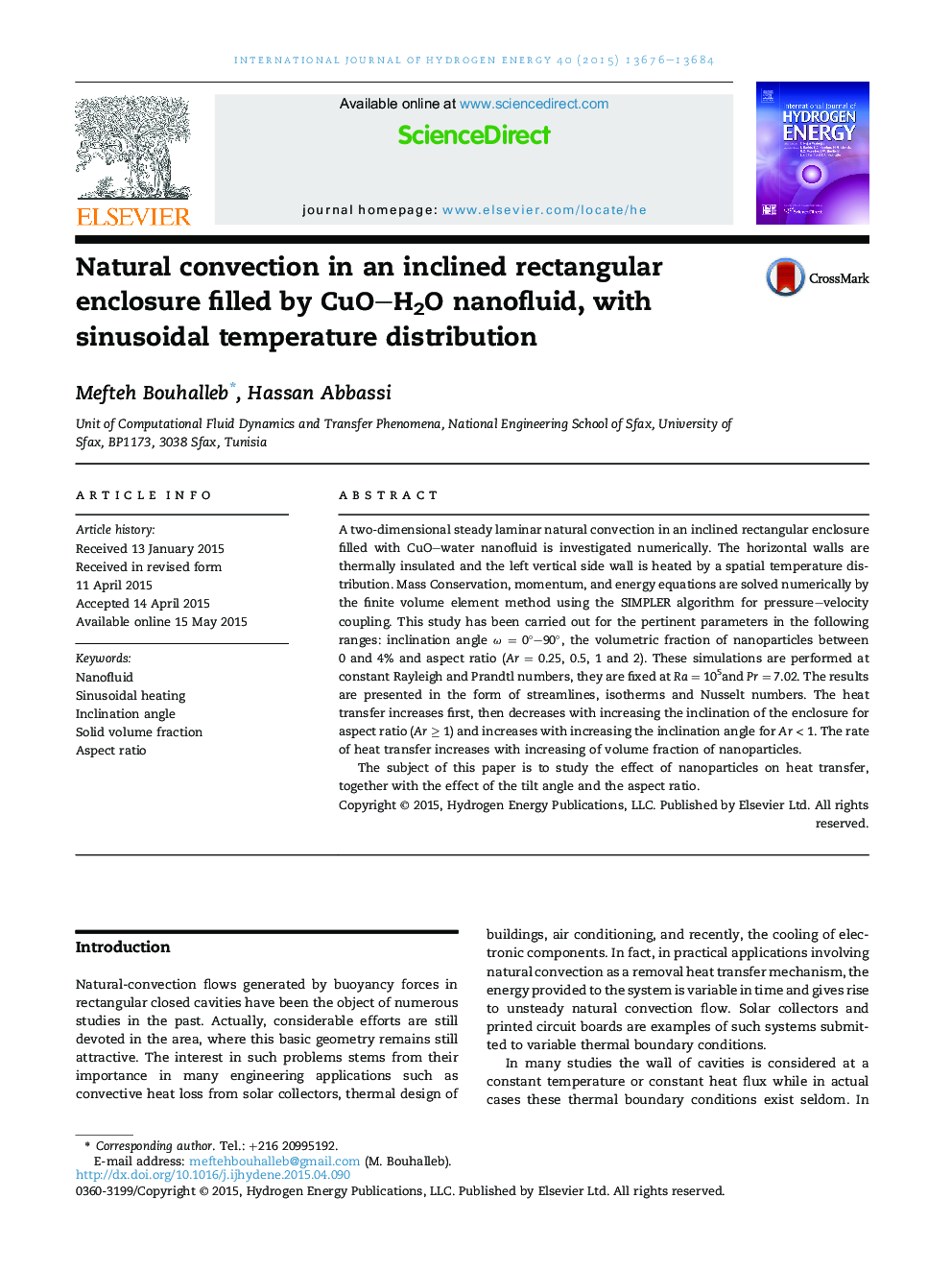| Article ID | Journal | Published Year | Pages | File Type |
|---|---|---|---|---|
| 1274659 | International Journal of Hydrogen Energy | 2015 | 9 Pages |
•The effect of the inclination angle on the flow and temperature distribution.•The influences of the nanoparticles on heat transfer.•The effects of aspect ratio and inclination angle on heat transfer.•The effects of inclination angle on local Nusselt number.•The effects of volume fraction on local Nusselt number.
A two-dimensional steady laminar natural convection in an inclined rectangular enclosure filled with CuO–water nanofluid is investigated numerically. The horizontal walls are thermally insulated and the left vertical side wall is heated by a spatial temperature distribution. Mass Conservation, momentum, and energy equations are solved numerically by the finite volume element method using the SIMPLER algorithm for pressure–velocity coupling. This study has been carried out for the pertinent parameters in the following ranges: inclination angle ω = 0°–90°, the volumetric fraction of nanoparticles between 0 and 4% and aspect ratio (Ar = 0.25, 0.5, 1 and 2). These simulations are performed at constant Rayleigh and Prandtl numbers, they are fixed at Ra = 105and Pr = 7.02. The results are presented in the form of streamlines, isotherms and Nusselt numbers. The heat transfer increases first, then decreases with increasing the inclination of the enclosure for aspect ratio (Ar ≥ 1) and increases with increasing the inclination angle for Ar < 1. The rate of heat transfer increases with increasing of volume fraction of nanoparticles.The subject of this paper is to study the effect of nanoparticles on heat transfer, together with the effect of the tilt angle and the aspect ratio.
